
Are you worried that your fish may be ill? It is important to be aware of the signs and symptoms associated with illness in order to provide your aquatic friends with proper care. Common causes of illness in fish include poor water conditions, parasites, bacterial infections, nutritional deficiencies, stress, injury, and old age.
In this blog, we will discuss the most common causes of illness in fish, how to diagnose them, and available treatment options so you can keep your tank inhabitants healthy and happy.
Common Signs of Illness in Fish
An important part of keeping your fish healthy is being able to recognize when something is wrong. Common signals that signal a potential problem include changes in a fish’s appearance, behavior, and water quality. It’s important to keep an eye out for any of these signs and address them quickly. This can help make sure your fish remain safe and healthy over the long run.
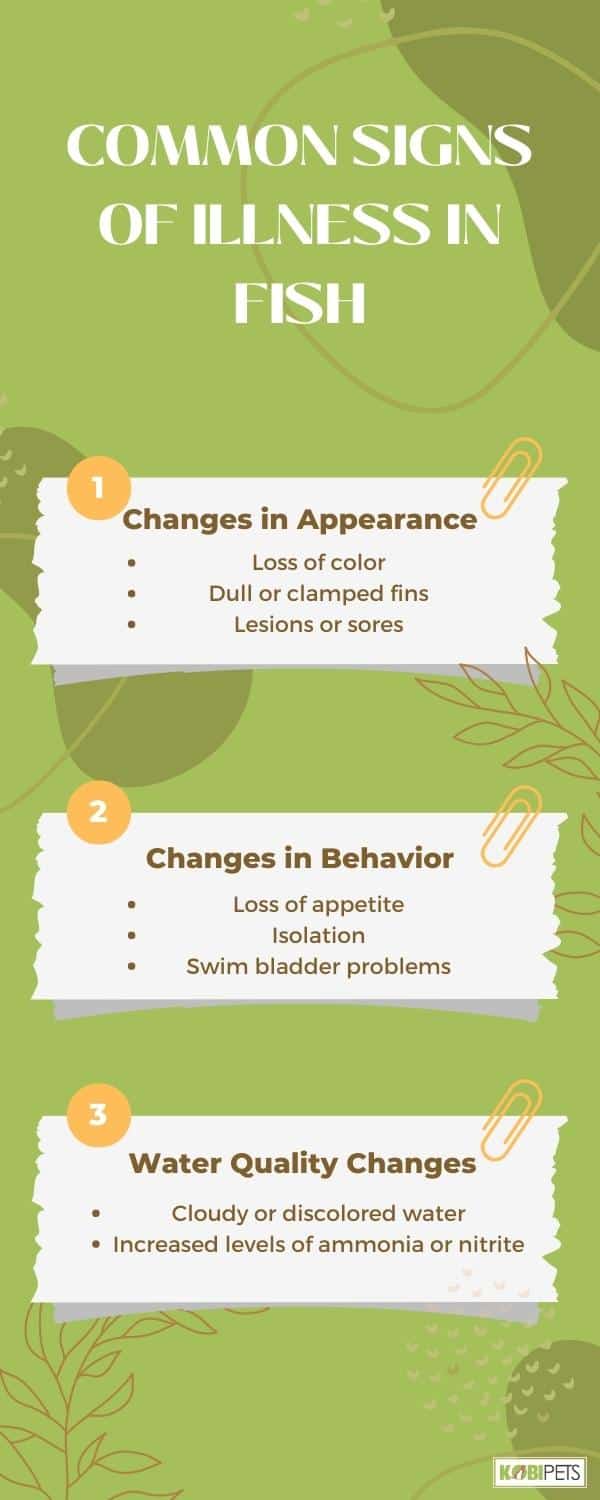
Common Signs of Illness in Fish
Changes in Appearance
Loss of color
In fish, there can be a common sign of illness in the form of changes to their coloration. Depending on the type of fish, this can come in many forms such as faded spots or stripes, discoloration around the eyes, pale coloring around their mouths, or even an overall dulling of their hue.
Usually, these changes accompany other symptoms that may be indicative of illness and should warrant further investigation by an experienced fishkeeper. Furthermore, changes in coloration could also indicate changes in water chemistry, disease-causing microbes, or nutrient deficiencies — all issues that require attention as soon as possible to mitigate any potential health problems.

Dull or clamped fins
Dull or clamped fins are common signs of illness in fish. These physical changes can indicate underlying issues with the fish’s health such as bacterial infection, single-celled parasites, nutritional deficiencies, and more.
It is important to observe the appearance of your fish regularly to identify any changes early on. If you observe any change in fin condition, it is important to check for other signs of illness such as erratic swimming behavior, lack of appetite, or changes in color.
Taking swift action if you see a change in fin appearance is essential to keeping your fish healthy and happy.
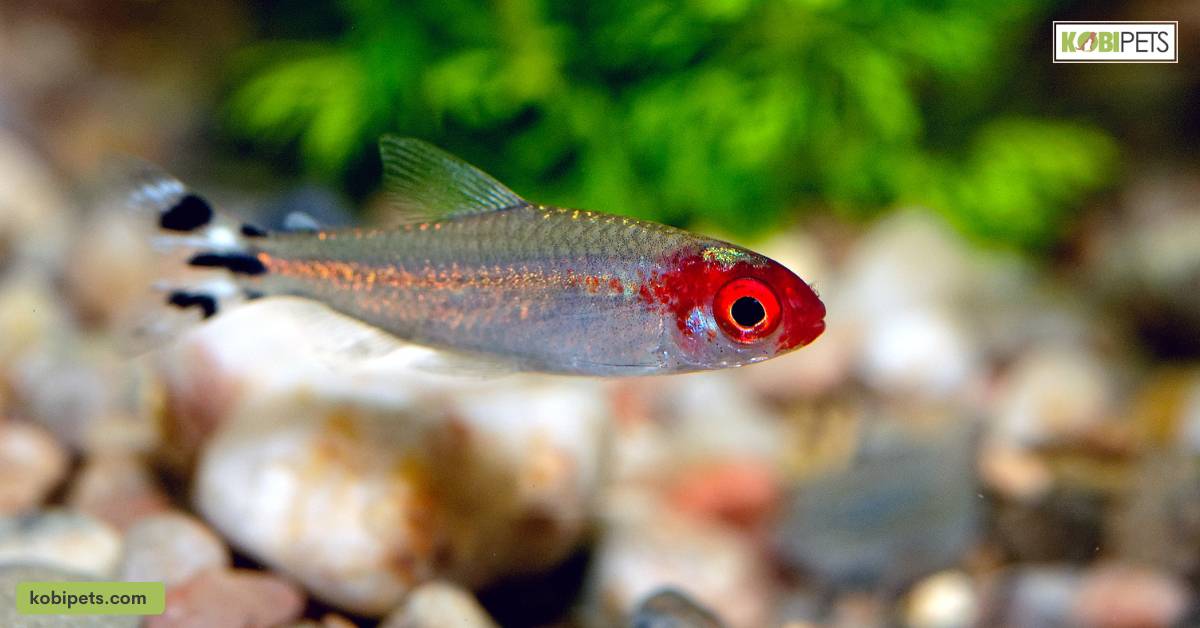
Lesions or sores
Spotting signs of illness in fish can be difficult because the symptoms often present as subtle changes in appearance, such as lesions and sores. Lesions on a fish’s body are usually round, discolored patches and abrasions that can occur anywhere, including the fins and tail.
Sores can also appear around the mouth when a fish is stressed or not kept in clean water as they can be caused by parasites or bacterial infections. Paying close attention to your fish’s external features is essential to being able to catch any illnesses early, so you can take quick action and give them the best possible chance of recovery.

Changes in Behavior
Loss of appetite
With fish being such social creatures, changes in behavior are often one of the first clues that something might be wrong with your furry friend. Loss of appetite is a common sign of illness in fish and can be indicative of many underlying issues.
If appetite is reduced or there seems to be a change in their favorite meal, it’s time to get close observations of your aquatic buddy and keep them as healthy as possible. Paying attention to all aspects of your pet’s environment and behavior is key to keeping them safe and healthy in their aquatic home.
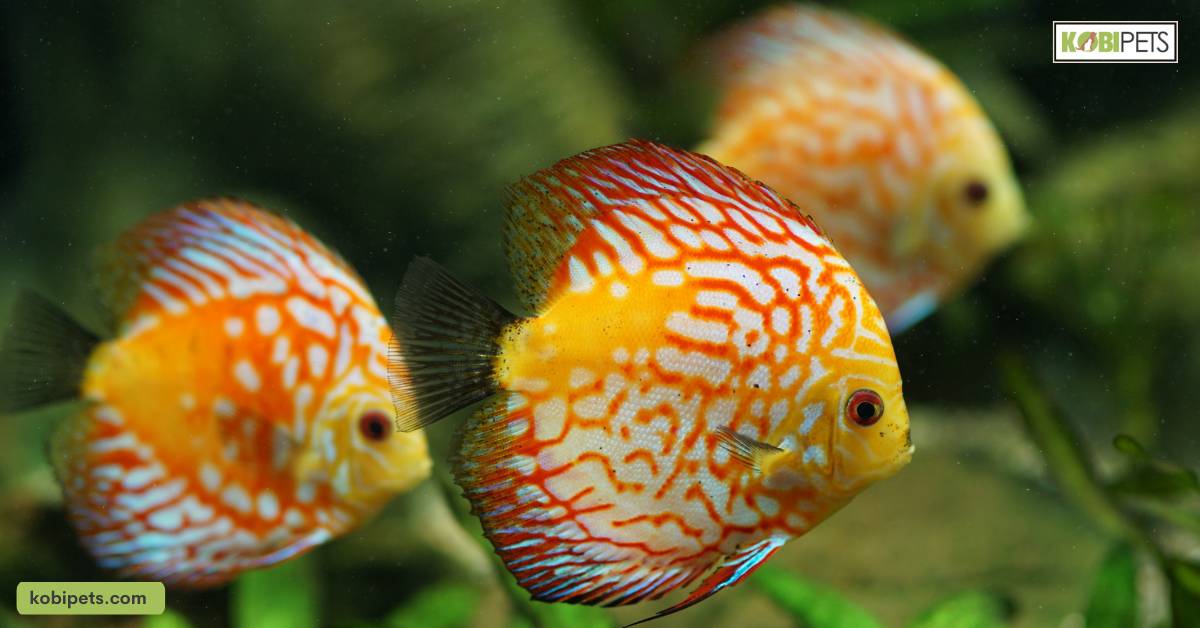
Isolation
Different illnesses in fish can manifest through changes in behavior, posing a challenge to diagnose and treat. Isolation, while stressful for the fish, is a critical aspect of any diagnostics or treatment plan. Separating sick fish from those that are healthy can help to prevent the spread of illnesses between tanks and allow for observation to narrow down the cause of illness.
By isolating the suspect fish, it can be more closely observed and changes noted as symptoms evolve. Additional signs such as loss of appetite, discoloration, or lesions may become visible with time, helping confirm a diagnosis and ensure the proper course of treatment is implemented quickly.
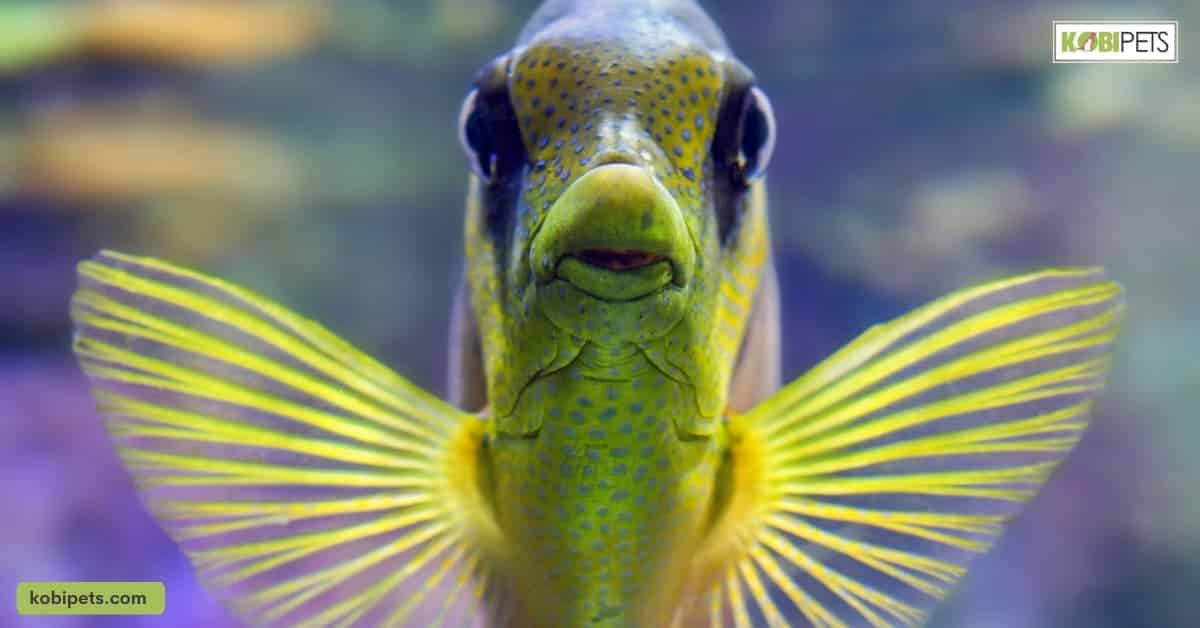
Swim bladder problems
Fish illnesses can manifest in many forms, with swim bladder problems being one of the most common. When a fish is having trouble maintaining its appropriate level in the water, this is a sign that something is wrong.
Other changes in behavior like loss of appetite, staying still and furthest away from other fish, or swimming erratically are all indications that a fish may be ill. To confirm a diagnosis and determine the best course of treatment, it is important to consult an experienced veterinarian who specializes in fish health.
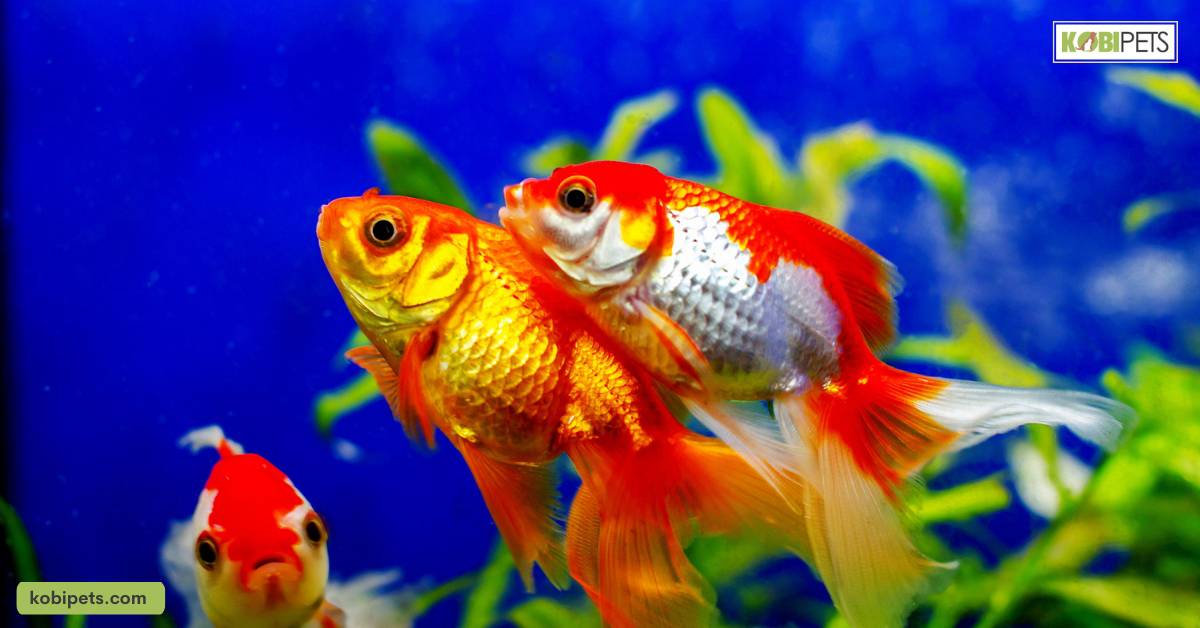
Water Quality Changes
Cloudy or discolored water
Water quality changes are often the most relied-upon indicator of illness in fish. Specifically, cloudy or discolored water can be seen as a sign that something is wrong with the health of your aquarium’s inhabitants.
When it comes to evaluating clouds in the water, it is important to remember that many factors contribute to water clarity, such as algae blooms and sedimentation from rocks and gravel. Additionally, particularly new aquariums may take up to two months to cycle before problems arise from chemical imbalances caused by overcrowding or uneaten food.
However, in a mature and healthy tank there should be little to no cloudiness present – if it persists for a few days then investigating further into bacterial infections or organ malfunction might be warranted.
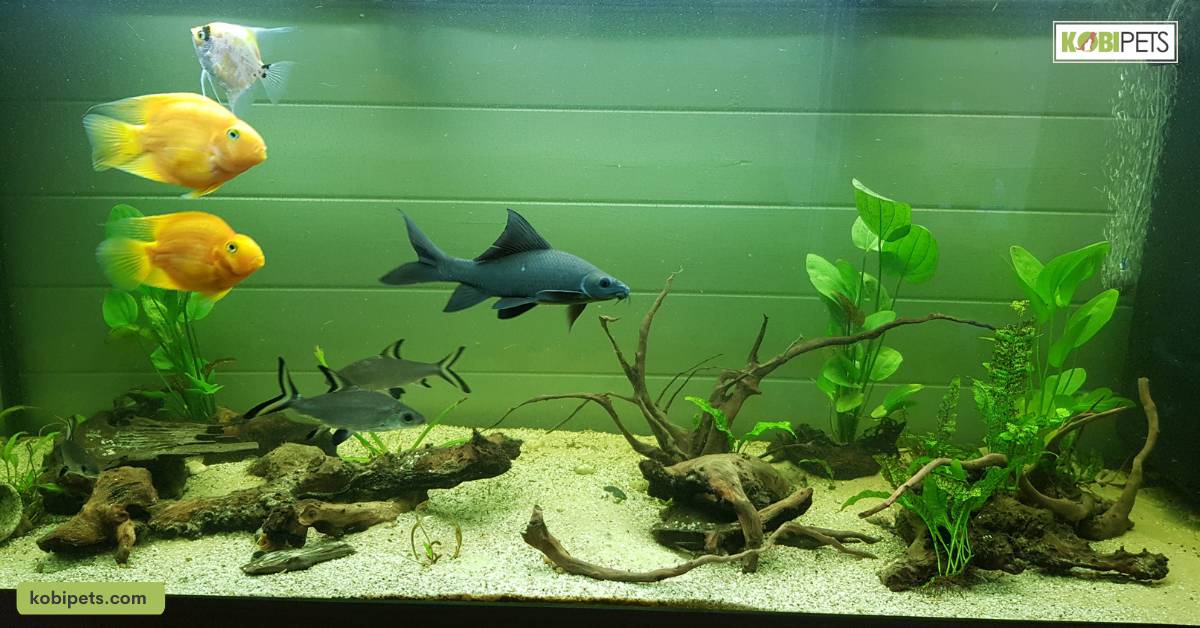
Increased levels of ammonia or nitrite
Having ammonia or nitrite levels in aquarium water that are higher than normal can cause serious problems for fish. Fish have a low tolerance to these levels and will become stressed, leading to symptoms of illness such as loss of appetite, slumped posture, decreased activity, and pale coloration.
As fish rely on their environment for health and well-being, it is important to always monitor and test the water quality when keeping fish in an aquarium, particularly testing for ammonia and nitrite levels to ensure that they remain within a safe range.
If these levels rise too high, action needs to be taken immediately as fish may suffer permanent damage or death. Appropriate water changes and changing/cleaning filtration components are essential operations to keep ammonia and nitrite levels healthy.

Causes of Illness in Fish
Fish are often exposed to a variety of environmental hazards that can lead to disease. Some of the most common causes include poor water quality, bacterial and viral infections, inadequate nutrition, and various parasites.
Stress may also be a factor in certain cases. Careful monitoring of water parameters and good husbandry practices greatly reduce the risk of illness in fish and help keep them healthy.
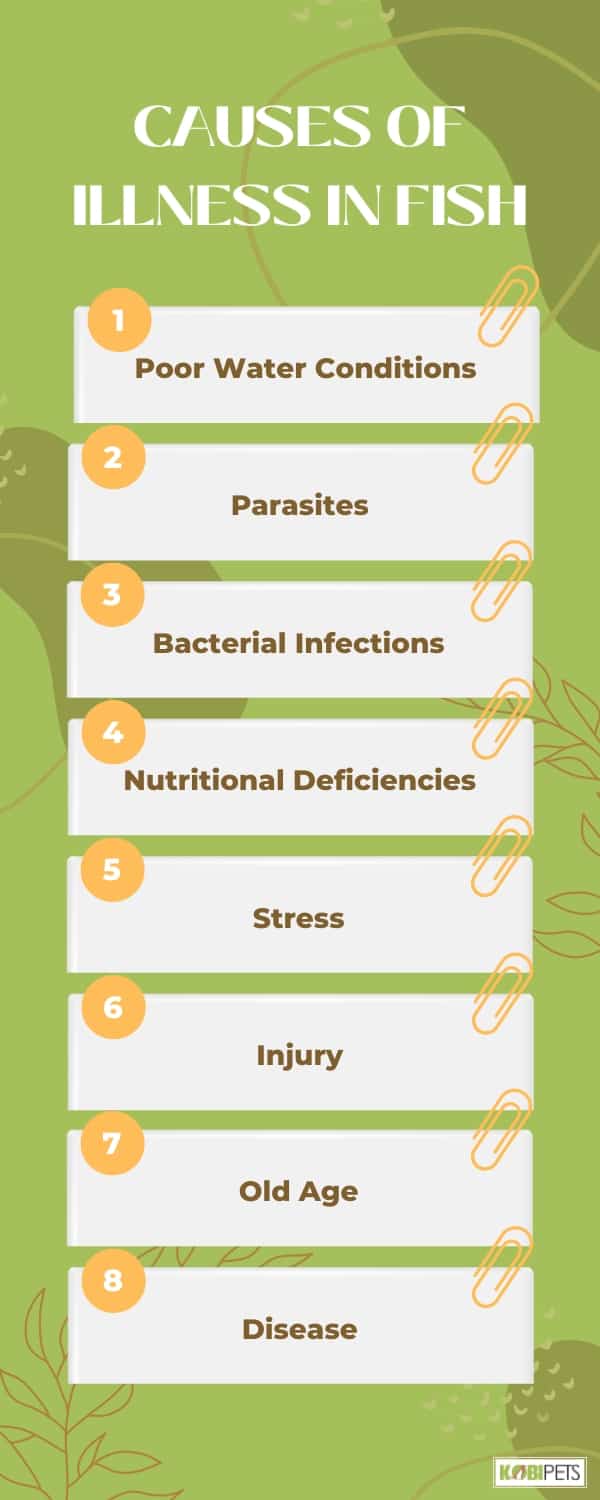
Causes of Illness in Fish
1. Poor Water Conditions
Poor water conditions are a leading cause of illness in fish, as ammonia and nitrites that build up in the tank can lead to health problems for your aquatic friends. To keep your aquarium healthy, regular testing of the water quality is important. Additionally, performing periodic water changes can help ensure safe levels of ammonia and nitrates.
2. Parasites
Parasitic infections, such as Costia, Cryptocaryon, and Ichthyophthirius multifiliis (also known as Ich or white spot disease) are common causes of illness in fish. These parasites attach themselves to the outside of the fish’s body and can lead to a variety of health issues, including loss of appetite, lethargy, and respiratory problems.
3. Bacterial Infections
Bacterial infections are also common in fish and can be caused by poor water quality or overcrowding. Symptoms include darkened patches on the skin and body, lack of appetite, cloudy eyes, white or grey patches on the fins and body, and frayed or discolored fins.
4. Nutritional Deficiencies
If a fish fails to receive adequate nutrition, it can become susceptible to illness. Nutritional deficiencies are often caused by an unbalanced diet or lack of essential vitamins and minerals in the food they consume. Symptoms include lethargy, discoloration of the fins and body, bloating, and difficulty swimming.
5. Stress
Stress can be caused by many factors in fish, including overcrowding and changes to their environment. Symptoms include loss of appetite, increased aggression towards other tankmates, and hiding or staying away from other fish in the tank. Stress in fish can also lead to other health problems, so it’s important to keep your tank inhabitants as comfortable as possible.
6. Injury
Injury is another common cause of illness in fish and can occur due to a variety of things, such as fighting between tankmates or aggressive cleaning practices (e.g. over-vigorous scrubbing of the tank walls). Injuries can lead to infection and other health issues, so it’s important to keep a close eye on the tank’s inhabitants and take quick action if something appears amiss.
7. Old Age
As fish age, they become more susceptible to disease and illness due to a weakened immune system. Common symptoms include a lack of energy, loss of appetite, and difficulty swimming. While there is no cure for old age, it’s important to support your fish through this time by providing them with a clean environment and quality food.
8. Disease
There are many different diseases that can affect fish, such as Dropsy, Hole in the Head Disease, and Popeye. It’s important to be aware of these diseases, their symptoms, and how to properly treat them. In most cases, the disease can be prevented by maintaining a healthy aquarium environment and providing your fish with quality nutrition.
By understanding what could be causing illness in your fish, you can take the necessary steps to keep them as healthy and happy as possible. Be sure to stay vigilant in monitoring water quality and paying close attention to any changes in behavior or appearance.
Diagnosing Illness in Fish
Diagnosing illness in fish can be a difficult task for aquatic specialists. This requires a keen eye and detailed knowledge of fish anatomy, behavior, and overall health. It is important to ensure that necessary tests are performed correctly, such as examining a sample of the fish’s skin or gills, checking water chemistry parameters, and carrying out lab analyses.
In order to assess exactly which problem is afflicting the fish, it is crucial to gather all available data from both physical exams as well as environmental observations. Further evidence may also be obtained using advanced techniques like microscopy or genetic testing, which can provide insight into specific issues.
Armed with this information, aquatic specialists will be able to carefully diagnose an ailment in fish and formulate an effective treatment plan accordingly.

Treatment Options for Sick Fish
Keeping a fish tank is immensely satisfying, yet can also be quite daunting when it comes to treating sick fish. It is important to have the right knowledge and resources to treat and prevent diseases in your aquarium. Fortunately, there are many treatment options available to help sick fish recover quickly and safely.
1. Antibiotics
Antibiotics are commonly prescribed to fish in order to treat bacterial infections and other diseases caused by bacteria. These medications can be administered orally or injected directly into the water, depending on the type of infection being treated.
2. Medicated Food
Fish foods designed specifically for treating sick fish may contain antibiotics, vitamins, and other nutrients to help restore health.
3. Parasite Treatments
Special medications designed specifically for treating parasites in fish can be used in order to eliminate the problem in an aquarium environment. These treatments typically contain chemicals that target the particular parasite causing the issue.
4. Water Changes
Regular water changes are an important part of any treatment plan for sick fish. Replacing a portion of the tank water helps to remove any toxins or disease-causing agents, as well as providing fresh oxygen for the fish’s gills.
5. Quarantine
Isolating a sick fish from other inhabitants in the tank is key to providing optimal health care. This quarantine allows the fish to receive personalized attention and treatment, while also protecting other tankmates from potential harm.
6. Stress Reduction
Reducing stress is essential for a sick fish’s recovery. Providing a quiet area in the aquarium away from other tankmates, increasing aeration, and maintaining consistent water temperatures are all important elements in the de-stressing process.
7. Proper Nutrition
Maintaining proper nutrition is a key part of any treatment plan for sick fish. Providing quality food that contains the necessary vitamins and minerals helps to build up the fish’s immune system, allowing it to fight off infections and other illnesses.
It is important to consult a professional when treating a sick fish in order to determine the best course of action. Taking the necessary steps to keep your aquatic friends healthy and happy will ensure they continue to thrive in their home environment.

In Conclusion
It is important to understand the potential causes and treatments of illness in fish so that you can provide your aquatic friends with the care they need. Taking time to observe changes in behavior, monitor water quality, and provide a healthy environment for your fish will help ensure that your tank remains happy and healthy for years to come.


